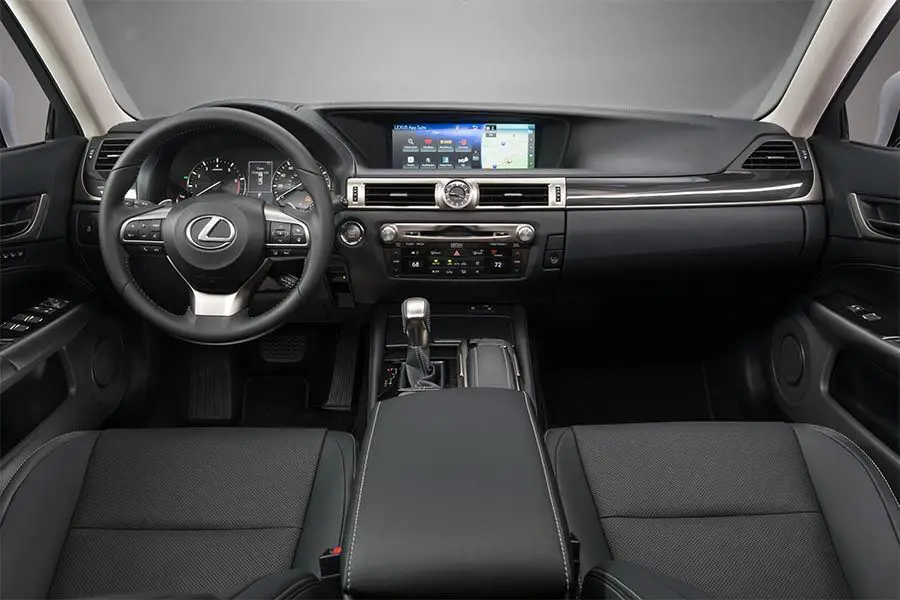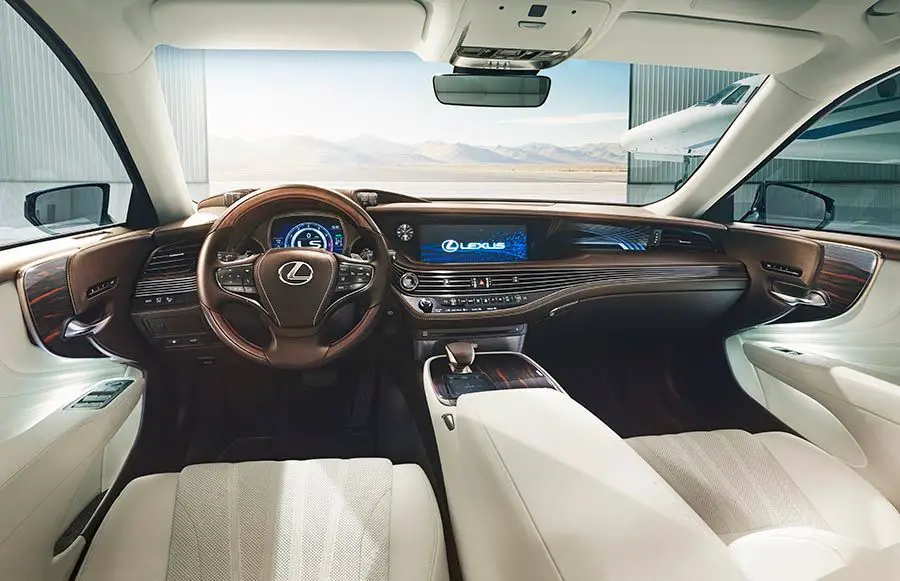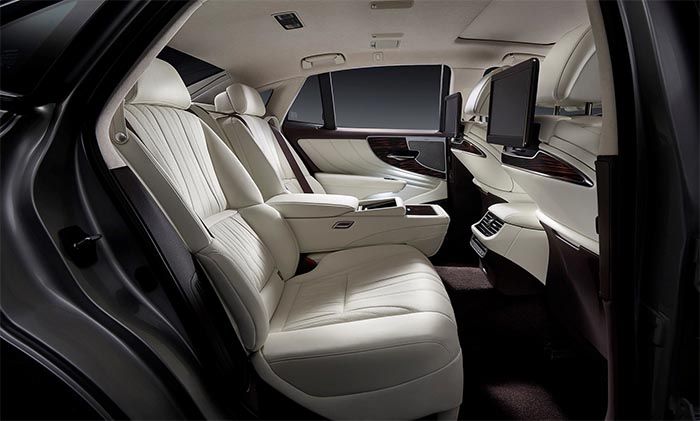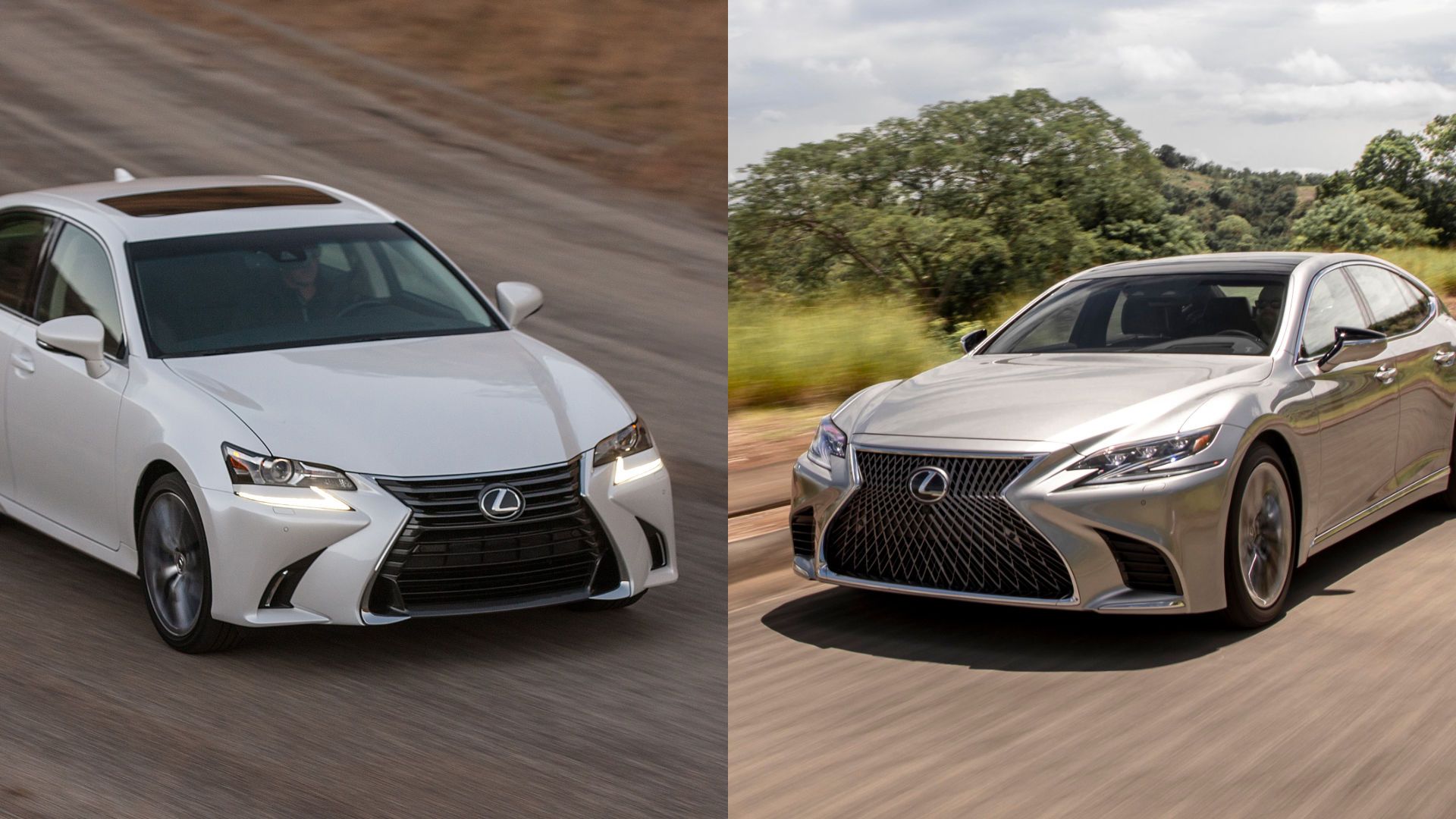2021 Update: We’re sad to see it go, but the Lexus GS has been discontinued in the US. We’ll leave this 2020 comparison here for reference.
The Lexus GS and Lexus LS are the two most expensive sedans that Lexus currently has on offer. The GS is a midsize luxury performance sedan whereas the LS is a full-size luxury sedan.
While their premium price tags mean they don’t sell as well as the Lexus IS or ES, these top-of-the-line sedans offer superior performance and comfort. But given the choice, which one should you choose?
It is tempting to simply boil everything down to whether you want a sporty mid-size performance sedan or a luxury-focused full-size sedan and call it a day. However, that would be grossly overlooking all the other differences between the two models.
Quick Summary
As its flagship sedan, the Lexus LS is the biggest and most luxurious sedan offered by Lexus. The Lexus GS is a slightly smaller mid-size sedan that is sportier in nature.
Model Options
The 2020 Lexus GS is offered in two models: The base GS 350 model and the sport-themed GS 350 F Sport model, both of which are powered by a similar gasoline-powered engine.
Note that Lexus also (rather confusingly) offers the GS F, which is a full-blown performance tuned GS. Unlike the GS 350 F Sport, which only has tweaks on the surface, the GS F has a beastly V8 and other big changes. It is comparable to a Mercedes-AMG or BMW M, in that it was produced in the high-performance division of Lexus.
The 2020 Lexus LS, on the other hand, is offered in a base LS 500 model, a sport-themed LS 500 F Sport model, a limited-edition LS Inspiration Series model, and a regenerative braking hybrid LS 500h model.
Price
The 2020 Lexus GS starts at $51,065 for its base GS 350 model and at $52,760 for the GS F Sport model.
The 2020 Lexus LS, on the other hand, starts at $75,450 for the base LS 500 model, and the price soars up to $97,665 for the range-topping LS Inspiration Series model.
Exterior And Interior Design
On the outside, both cars are distinctly Lexus with their large front grilles and striking, spaceship-like designs. However, the GS performance sedan’s smaller exterior dimensions give it a sportier edge. By contrast, the larger LS has a more refined look that gives it the class needed to be a state car for transporting government officials.


It’s the interior, however, where the differences are really obvious. Whereas the Lexus GS shares an interior similar to sports or performance Lexus cars (IS, RC etc.), the Lexus LS has a truly high-class interior that is the very definition of luxury and comfort.
Size
If bigger equals better to you, then the Lexus LS Is the clear winner.
It is 206.1 inches long, 74.8 inches wide, and up to 57.9 inches high, with a wheelbase of 123 inches. The Lexus GS, on the other hand, is 192.1 inches long, 72.4 inches wide, and 57.9 inches high, with a wheelbase of 112.2 inches.
The cabin of the LS is roomier than that of the Lexus GS, making sure passengers have ample space even when the all 5 seats are occupied. In the front, the LS offers 1.5 inches more shoulder room, 1 inch more hip room, and 1.3 inches less legroom than the GS. In the rear, the 2020 LS offers 0.7 inches more shoulder room, 1 inch more hip room, and 2.1 inches more legroom than the GS.
The GS does however provide around an inch more headroom than the LS, but there is already plenty of headroom in the LS—so it isn’t a particularly big advantage.

When it comes to cargo capacity, however, the GS manages to get the upper hand. It offers an 18.4-cubic-foot trunk while the LS offers a 16.95-cubic-foot trunk. Although both trunks are big for sedans, neither car has foldable rear seats, meaning it can make larger objects like flat-pack furniture more awkward to haul.
Powertrain
As you would expect, the Lexus LS houses larger and more powerful engines than that of the Lexus GS.
The LS 500 and LS 500 F Sport come equipped with a twin-turbocharged 3.5-liter V6 engine that pairs with a 10-speed automatic transmission. This engine generates 416 horsepower and 442 lb.-ft. of torque, which is enough to propel both the LS 500 and the LS 500 F Sport from zero to 60 mph in just 4.6 seconds. This engine also delivers a fuel economy of up to 19 mpg in the city and 30 mpg on the highway (RWD models).
The LS 500h hybrid model gets a hybrid engine that pairs a 3.5-liter V6 engine with two electric motors. This hybrid engine sends 354 horsepower to the wheels via a unique continuously variable transmission that is coupled to a 4-speed automatic gear set. It sacrifices some performance (zero to 60 mph in 5.1 seconds) but delivers a better fuel economy of 25 mpg city/33 mpg highway in the RWD model.
The Lexus GS, on the other hand, is only available with a naturally aspirated 3.5-liter V6 engine that pairs with an eight-speed automatic transmission. This engine generates 311 horsepower and 280 lb.-ft. of torque, which is enough to take the car from zero to 60 mph in 5.7 seconds. It delivers a fuel economy of 20 mpg in the city and 28 mpg on the highway, making it very comparable to the petrol variants of the Lexus LS.
Technology
Both the Lexus LS and Lexus GS offer the latest in-car tech.
Some of the standard features that come with the Lexus GS include a huge 12.3-inch high-resolution touchscreen infotainment system that includes a Lexus navigation system, an electrochromic rearview mirror with compass and HomeLink®, leather seating surfaces, LED ambient lighting, a 10-way power-adjustable driver’s seat, a power moonroof, and a premium Mark Levinson® 12-speaker audio system with 5.1 surround sound.
The 2020 Lexus LS builds on the offerings of the GS with even more premium features like a standard heated leather-trimmed steering wheel, standard 16-way power-adjustable heated and ventilated front seats, standard rear seat touchscreen controls, standard Amazon Alexa assistance, magnesium paddle shifters, and more.
Verdict
For most buyers, the choice between a Lexus GS and Lexus LS should not be a difficult one. These are fundamentally two very different cars. The GS feels sportier, lighter, nimbler and is thus more fun to drive. Meanwhile, the bigger LS offers a smoother drive and truly shines as a luxury cruiser, but doesn’t handle as well as the GS.
We’d definitely go one step further and say that if you decide the more youthful and sporty GS is for you, paying the additional ~$1.5k for the F Sport model is the way to go. The small changes really help bring out the identity of the GS, whereas the standard GS straddles the line between performance and comfort sedan.
